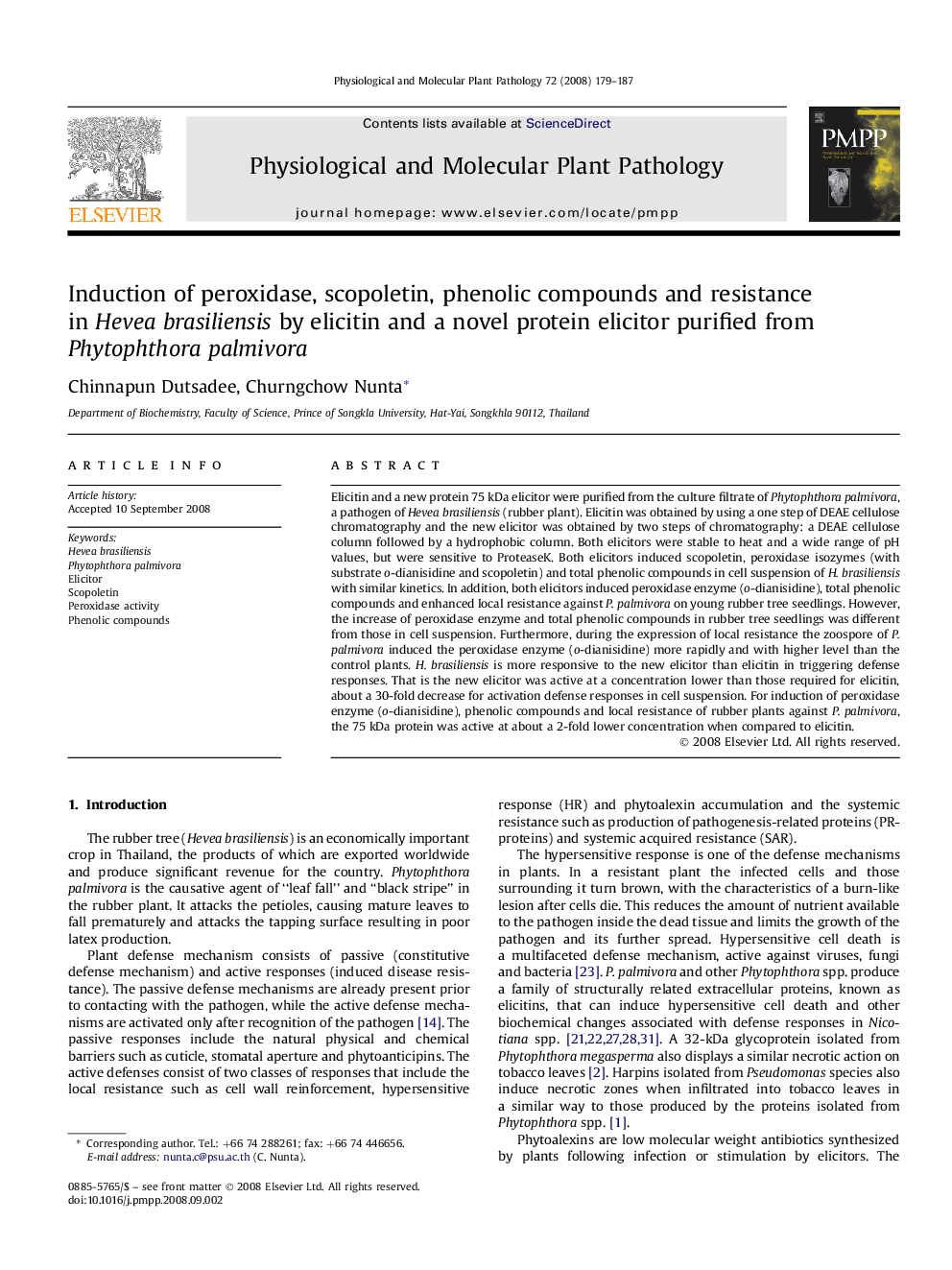| Article ID | Journal | Published Year | Pages | File Type |
|---|---|---|---|---|
| 2836685 | Physiological and Molecular Plant Pathology | 2008 | 9 Pages |
Elicitin and a new protein 75 kDa elicitor were purified from the culture filtrate of Phytophthora palmivora, a pathogen of Hevea brasiliensis (rubber plant). Elicitin was obtained by using a one step of DEAE cellulose chromatography and the new elicitor was obtained by two steps of chromatography: a DEAE cellulose column followed by a hydrophobic column. Both elicitors were stable to heat and a wide range of pH values, but were sensitive to ProteaseK. Both elicitors induced scopoletin, peroxidase isozymes (with substrate o-dianisidine and scopoletin) and total phenolic compounds in cell suspension of H. brasiliensis with similar kinetics. In addition, both elicitors induced peroxidase enzyme (o-dianisidine), total phenolic compounds and enhanced local resistance against P. palmivora on young rubber tree seedlings. However, the increase of peroxidase enzyme and total phenolic compounds in rubber tree seedlings was different from those in cell suspension. Furthermore, during the expression of local resistance the zoospore of P. palmivora induced the peroxidase enzyme (o-dianisidine) more rapidly and with higher level than the control plants. H. brasiliensis is more responsive to the new elicitor than elicitin in triggering defense responses. That is the new elicitor was active at a concentration lower than those required for elicitin, about a 30-fold decrease for activation defense responses in cell suspension. For induction of peroxidase enzyme (o-dianisidine), phenolic compounds and local resistance of rubber plants against P. palmivora, the 75 kDa protein was active at about a 2-fold lower concentration when compared to elicitin.
